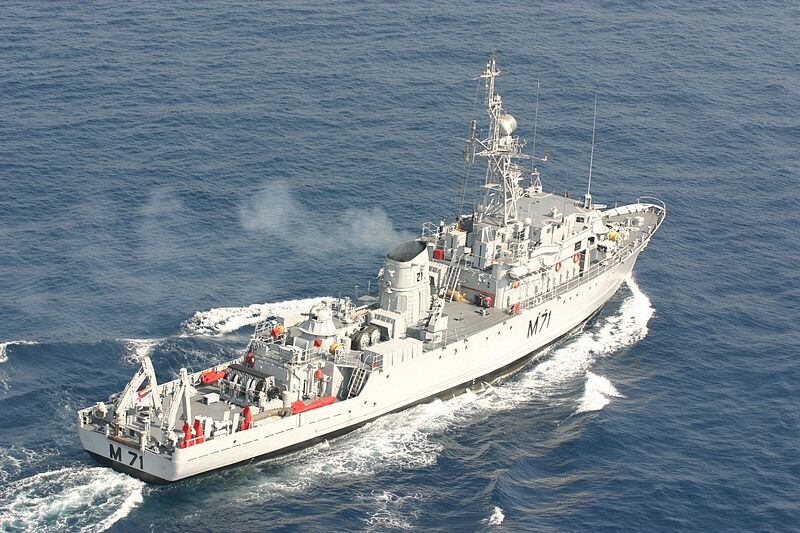NEW DELHI ― Goa Shipyard Limited’s quest to build 12 high-tech mine countermeasure vessels for $5 billion, which is already delayed, has hit a roadblock over the selection of propulsion engines.
According to a source in India’s Ministry of Defence, the Navy supports a multi-vendor tender process for the engine selection, but Goa Shipyard, citing reservations from Kangnam Corporation of South Korea, prefers a single-vendor nomination of German MTU engines.
Goa Shipyard of India, which is state-owned, was nominated by the MoD to make 12 MCMVs for the Indian Navy. Kangnam was selected to provide the technology needed to build the vessels because India does not possess the required technology.
The Kangam-built MCMVs for the South Korean Navy are fitted with German MTU engines, and the company is offering the same to India. However, the Indian Navy is skeptical about the suitability of German MTU engines for Indian MCMVs because of the differences in geographical location and areas of operation.
India’s coastline is about 7,500 kilometers ― larger than that of South Korea.

“The magnetic signature of engines are key parameters for selection of an engine for MCMV, whose primary function is to detect and kill mines at sea. German MTU engines are not inherently nonmagnetic as they are not designed specifically for MCMV operations,” a senior Indian government official said.
“Their magnetism is suppressed using external magnet and other specialized, external systems, and these systems are required to be continuously returned to keep magnetic signature of ship within limits as ship sails from one port to another,” the official continued.
The retuning, the official added, is not practical in a warlike situation “where assets are required to be deployed at different ports of India at a very short notice.”
RELATED

An Indian Navy official said of the matter: “Even U.S. Navy, whose operational specifications are similar to that of Indian Navy as far the wide theater of mine-hunting operations is concerned, does not use magnetically compensated MTU engines in their mine-hunting ships but use inherently nonmagnetized engines available in the market.”
There’s concern that selecting an engine incompatible with the mission would jeopardize the MCMV’s main purpose.
“Engine whose magnetic signatures are required to be suppressed using external systems put a serious restriction on the mine-hunting capabilities of the vessel once the geographical location of the vessel is changed. We would like to have an engine with very low magnetic signature so that the vessel is capable of undertaking mine-hunting operations worldwide, especially in the Indian Ocean region, which is the primary theater of operation for Indian Navy”, according to another Indian Navy official.
An official with the MoD said the ministry will ask Goa Shipyard to explore further options for an Indian MCMV engine that best suits the needs of the Navy.
“We are technically evaluating the matter and will soon arrive at decision best suited for the operational interests of Indian Navy,” the first Navy official said.
Vivek Raghuvanshi is the India correspondent for Defense News.








